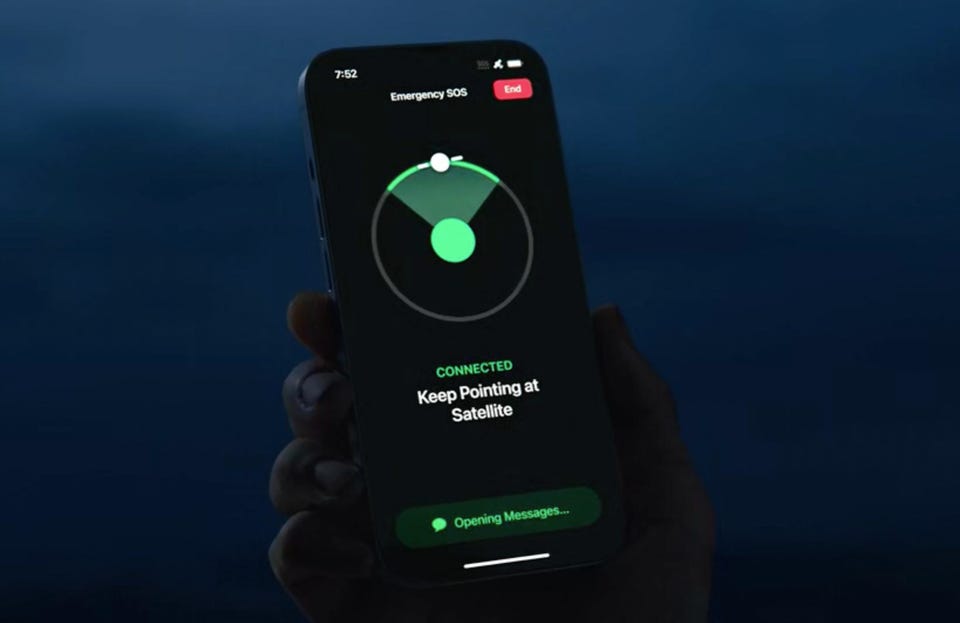On Wednesday, Apple invited reporters and analysts to its annual iPhone launch event in Cupertino, California, the first in-person gathering after a years-long hiatus caused by the global pandemic. The event, held at the company’s sparkling Apple Park campus, came amid a historic heatwave in California — the day before, dangerous weather conditions threatened to topple the state’s aging energy grid. The unsettling circumstances provided a fitting backdrop for Apple’s announcements, which historically have seemed trivial in the face of climate change and an ongoing public health crisis.
But the new features Apple is hawking seem to be increasingly geared toward emergency prep, in a world where disasters are more frequent. One of the new marquee features for the iPhone is “Emergency SOS via Satellite,” which lets people ping satellites with distress signals when they are outside of cellular or wi-fi coverage. The feature also streamlines an emergency call, letting people tap on various emergency scenarios instead of explaining them by voice to human operators.
The feature will be available in the US and Canada, and will be free for two years. Apple didn’t respond to a request for comment on how much it will cost after that. “Emergencies don’t always happen when it’s convenient,” Ashley Williams, Apple’s manager for satellite modeling and simulation, said during the event.
“When you need help you need it wherever you are. ” Another new feature is car crash detection, which uses tech including the accelerometer and gyroscope in an iPhone and Apple Watch to detect if someone has been in an automobile accident. If the system thinks the user has been involved in a crash, it will automatically dial emergency services in case that person is unconscious.
(While the feature is new to iPhones, Google’s Pixel phone has had car crash detection since 2019. ) The new features represent a shift in marketing strategy for Apple: positioning its products as safety tools in a dire world. The company has historically marketed its devices as hip and expressive tools for artists and other creatives, with sleek products that have stood out against mundane Microsoft and Dell offerings.
But as the company’s products have soared in dominance — more people now use iPhones in the U. S. than Android phones — Apple has also embraced another pitch to consumers: peace of mind.
Your iPhone, Apple insists, could save your life one day. The company has dabbled with this approach in the past. For years, the Apple Watch has offered fall detection, a feature similar to Life Alert that is aimed at the elderly.
But even the Apple Watch got more rugged this year. A new version, dubbed the Ultra, is geared toward hardcore outdoor types. It seems designed to rival the Garmin watches often preferred by nature enthusiasts, with deep-sea diving tech, sturdier bands, and multi-day battery life.
That will certainly be useful for outdoor activities, but the Ultra also seems more likely to survive (and help you survive) an accident or natural disaster. While the undercurrent of Apple’s new features was disaster preparedness, Apple didn’t mention the California heat wave during its presentation. (The keynote was pre-recorded and shown to a live audience gathered on site.
) When Apple held its iPhone event in 2020 days after raging California wildfires turned the sky an apocalyptic orange , the company didn’t mention that either . .
From: forbes
URL: https://www.forbes.com/sites/richardnieva/2022/09/07/iphone-14-apple-watch-ultra-disaster-prep/
